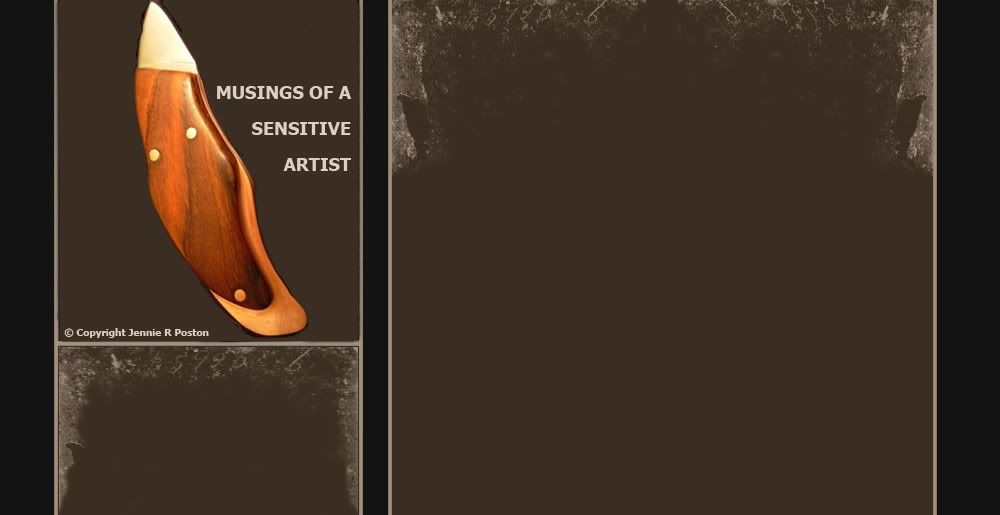Monday, June 26
Andrew Wyeth: Visual Analysis
A painting is the embodiment of the artist and all that surrounds him.
Everyday influences, emotions, environs, and contacts are expressed
through the smooth pigments. Only when the viewer is familiar with these
aspects can the painting be seen in its entirety. Art is profoundly
effected by history, economy, and social issues.
Andrew Wyeth, one of the great painters of the twentieth century, was
born in Chadds Ford, Pennsylvania, where he was instructed in art by his
father, noted painter and illustrator, Newell Convers Wyeth.
Consequently, many of his father‚s techniques and tendencies can be found
in Wyeth‚s work. His childhood home served as a source for subject
matter, as well as instilling in him a deep appreciation for the innate
beauty found in everyday elements. In response, Wyeth developed an
immense talent for photorealistic detail. However, this was not an
attempt to dazzle, but merely a tool for communicating the subtle moods
and restrained drama of his themes. His work is often symbolic in
feeling, while essentially pictorial and seldom explicit. Wyeth‚s
manipulation of light, perspective, texture, and subdued color harmonies
reflect the sharp focus and unconventional angles of modern photography.
By skillfully rendering minute details, he is able to describe the simple
intensity found in common subjects.
Wyeth‚s 1966 Cranberries depicts a humble table set with two barrels of
cranberries illuminated by rich, warm light filtering in from a large
window. The brilliant window serves as a main focal area and entry point
for the piece. The viewers‚ eye is then carried further into the
composition by the rays of light and the diagonal shadows cast by the
window frame. From the fruit on the window sill and the barrels the eye
travels to the table then into the negative space. The juxtaposition of
the L-shaped subject and the inverted, analogous negative space creates
balance and adds an interesting dimension to the composition. By varying
the value of the large negative space, Wyeth prevents it from overpowering
the positive space. The piece relies heavily on geometric elements:
series of rectangles, cylindrical forms of the cranberry containers,
ellipses of the fruit, and the implied triangles created by the movement
from the window to the edge of the table. There is a beautiful rhythmic
quality created by the repetition of form in the window, ellipses, and cast shadows unifying
the work. Wyeth masterfully translates the delicate features: the slight
fluctuations in value in the shadows and negative space, the wood grain in
the table and window, and the skin of the fruit. He further describes the
forms and surfaces with sensitive, expressive mark making; slight
variations in line quality and brush strokes creates subtle, yet
definitive forms. There are several admirable color relationships
apparent throughout the composition, including the complementary blue
basket and orange fruit, contrast between value and temperature, and well
defined light source. Despite using a limited palette, Wyeth is able to
get a respectable value range and produce elegant tonal harmonies. There
is a subtle tension created by unifying contrasting hues with similar
accents, as well as the differing temperatures. Also, the pairing of
objects, such as the cranberry containers and the fruit, hints at the
presence of an underlying metaphor. Through a combination of innate talent, acquired skill, and a
trained eye Andrew Wyeth is able to render nearly flawless photorealistic
images. However, he maintains the vitality and honesty of the subject.
His acutely realistic technique was impacted significantly by his family
and childhood. Wyeth strives to express the essence and beauty in
everything he paints, whether it be a brilliant, ripe fruit resting on an
aging window sill or a dark shadow striking a corner.
The sixties were a time of conflict and foreign tensions. America was
on the brink of the Vietnamese War, facing an uncertain future. A nation
once united was now divided by controversy. It was also the height of the
civil rights movement; long-standing prejudices were finally being
challenged. Despite the nation‚s turmoil, advancements in mechanics and
space exploration persisted. The strain of the time is greatly reflected
in Cranberries. The barrels of cranberries create a metaphor for the
Vietnamese conflict: two related forms filled with the same fruit, handles
on opposing sides(as if standing with arms crossed in defiance,) the
larger partially blocking the smaller from the light. Similar meaning can
be seen in the fruit on the window sill. The stress created between the
negative and positive, value changes, and dramatic color relationships
also suggests an uneasy atmosphere. However, the brilliant light
streaming down from the window reflects the scientific, technical, and
artistic growth of the sixties.
True art is born when the human spirit and external stimuli converge.
The best metaphors are formed in the artist‚s subconscious; spilled onto
the canvas without thought. It is not the metaphor itself, but the truth
it expresses that is powerful and profound. It is impossible to find a
piece of art that does not mirror the time in which it was composed. Art
is an expression, an extension of the artist; therefore, art can not be
separated from the world in which it was created.
© Copyright 2006 Jennie R Poston
Posted by SensitiveArtist ::
6:47 PM ::
1 comments


Post a Comment
-------------------------------------

